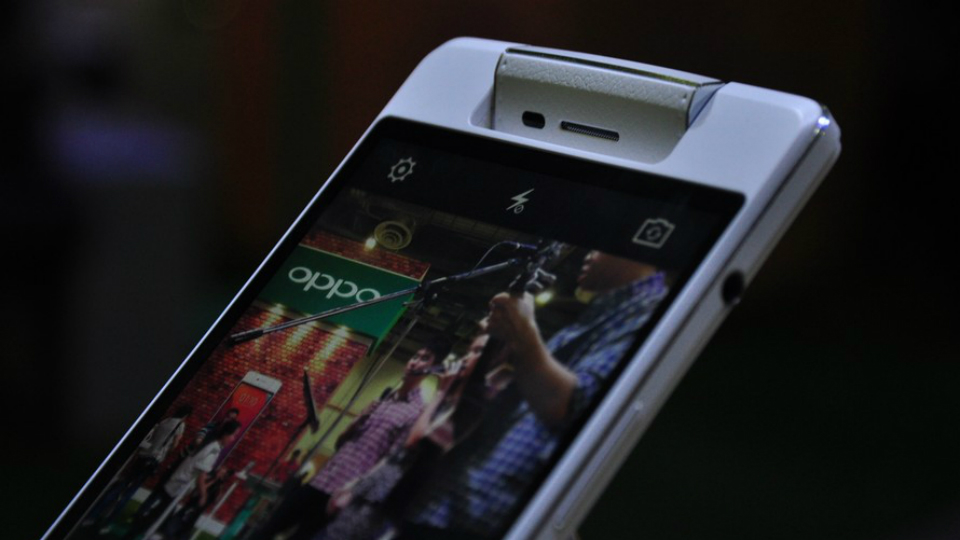What's up with Oppo? Some things you might not know about the mobile brand

Despite their meteoric rise in the mobile phone industry, not a lot of people have ever really heard of Oppo mobile phones before.
Unless you were an avid reader of tech blogs that talk about Chinese OEM mobile phone brands, the name “Oppo” probably made you think of Korean singer PSY singing “Gangnam Style.” Now they’re all over the news. Their stores are opening in malls all over Metro Manila. Where they don’t have a store yet, they have popup booths. And they dropped their prices until the end of the year.
So what’s the scoop? Here are some things you might want to know.
Don’t confuse them with Oppo Digital.
Oppo Digital makes consumer electronics for the North American market, while Oppo Global is the one focused on mobile phones. Oppo Digital’s products include Blu-ray Disc players, DVD players, headphones, amplifiers, HDMI cables, remote controls and various other audio accessories.
-
Most reviewers give Oppo Digital products high ratings. The BDP-103 Darbee Edition Blu-ray player, released in 2013, has a rating of 4.5 out of 5 stars from Cnet’s Stephen Dawson. He said, “First-class Blu-ray and DVD picture quality. Noticeable picture enhancements with ‘Darbee’ processing,” and “Excellent network media performance.” But at USD 899—about Php 40,391.10—it’s pretty expensive, considering you can get a Sony Playstation 3 (which is also a Blu-ray Disc player) for about Php 10,000 nowadays. Other lesser known brands of Blu-ray Disc players sell for less than Php 10,000.
Oppo used to make a lot of mp3 players.
-
Before they ventured into mobile phones, Oppo made portable media players (PMPs) that were released only in China and very few other Asian markets. One of their early products was the Oppo X1, a 2GB mp3 player with a jeweled surface that was available in a multitude of colors. In 2006, Oppo released the X31M, a guitar-shaped device that played MP3 and WMA files and also had an FM radio.
In 2007 Oppo released several products that reviewers noted for their aesthetics as well as their specs. There was the UP-9 mp3 player, which looked like a pendant, and had an FM/AM radio and a recording function. The V5 widescreen media player featured a three-inch touchscreen and Sennheiser earphones. The SuperFive featured top-mounted controls and played a wide array of formats.
In 2008, they released another portable media player, the S11, featuring a video out port and a microSD slot for loading in additional media. In the same year, Oppo made a play for the portable gaming console market with the Oppo Muse G11, a 3.2-inch, 432x240 touchscreen device with a d-pad and dedicated buttons. Oppo also tried their hand at an e-reader, the 6-inch Enjoy, released in 2010.
Most consumers around Asia have never heard of these products, but that didn’t stop Oppo from entering the mobile phone market in 2008.
They like to innovate.
Oppo’s first mobile phone didn’t really impress a lot of consumers, but their later releases certainly made headlines in tech news sites. In 2012 they released the Finder, with a 4.3-inch Super AMOLED Plus display, an 8-megapixel rear camera with a 1.3-megapixel camera up front, a 1.5GHz dual-core processor, 1GB of RAM, and 16GB of on-board storage. At the time, it was the world’s thinnest smartphone, beating fellow Chinese brand Huawei for the title. In 2013 the Find 5 impressed reviewers with a five-inch 1080p screen and a sturdy build. But it was the N1 with its rotating camera, released in October 2013, that really made waves.
Oppo was not the first company to release a mobile phone with a rotating camera. Nokia did something similar in 2005 with the N90, and in 2006 with the N93 and the 3250. But they didn’t sell very well. Eventually most manufacturers just put front and rear cameras on their phones.
But the Oppo N1 had better hardware, boasting a 13-megapixel camera. It also had good timing: everyone was on social media and taking selfies. Another breakthrough for the N1: it was the first time Google approved the release of an Android phone with the CyanogenMod OS. Cyanogen was an Android offshoot favored by those who like to root their phones and tinker beyond the default OS.
So Oppo took two things that worked for them in the past, and made them better: the R5 was the world’s thinnest smartphone at the time of its release, and the N3’s camera could not only rotate, but also be controlled remotely.
They have their fair share of controversy.
In December 2013, vice president Pete Lau left Oppo and started his own smartphone company, OnePlus. Details on the new company’s offerings were sketchy until they announced and launched their first phone, the OnePlus One. But media and users soon found out that Oppo Electronics fully owned OnePlus, leading some to think that Lau’s resignation from Oppo and his founding of a new company were all staged.
They want to be a worldwide brand.
The big launch event in Singapore, the Oppo and OnePlus drama and headline-making phones: all of these are part of a massive worldwide expansion effort. Oppo began working hard in 2013 to expand beyond China and Korea. In this year alone, they entered 17 overseas markets all over the world, including Mexico, France, the United Kingdom, the USA, the Middle East, Africa, North and South America and Australia.
Oppo officially entered the Philippine market with the launch of the Find 7 on April 10, 2014. After the big launch event in Singapore, Oppo stores and sale booths popped up in malls all over Metro Manila. Oppo products can now be found in the windows of many mobile phone shops.
The Chinese company is clearly intent on making their mark. In fact, they seem to be aiming directly for the biggest players: Apple and Samsung. An Oppo Philippines executive revealed that Oppo is really gunning for these two big brands.
Slated for release in 2015, the N3 is priced at US$649 (around PHP 29,159.53) and the R5 is priced at US$499 (approximately PHP 22,420.04). The Find 7a, already available locally, is priced at Php 22,990. At these prices, Oppo’s releases offer pretty impressive specs at prices that are noticeably lower than the two most popular brands. Consider that an iPhone 6 sells for Php 35,990 to Php 47,000, and the iPhone 6 Plus ranges from Php 41,990 to Php 53,000. The Samsung Galaxy Note 4 sells for about Php 35,000.
Only time will tell if Oppo’s efforts will pay off, and if the new markets will embrace their phones. But one thing’s certain: consumers know the name Oppo now, and are giving those specs a good look. — TJD, GMA News




